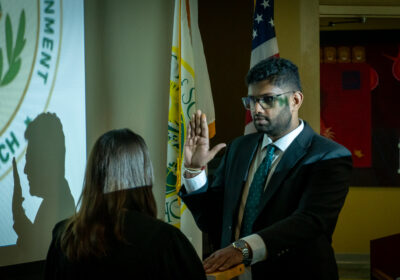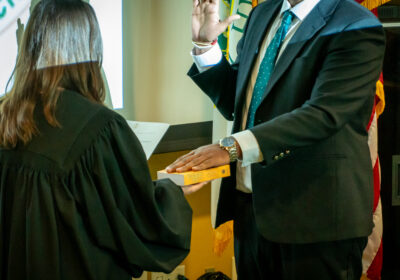The spread of The Kings Speech
After attracting the attention of film critics, “The King’s Speech” is now capturing headlines for something entirely different – promoting awareness of stuttering.
BBC News and the Washington Post have covered the subject this week, and the National Stuttering Association (NSA), the country’s largest self-help stuttering organization, has endorsed the film.
Stuttering Foundation President Jane Fraser even claimed the movie’s publicity “has done in one fell swoop what we’ve been working on for 64 years.”
“The King’s Speech” follows King George VI as he deals with a longtime stammer. In 1926 he met Australian speech therapist Lionel Logue, who would remain his lifelong therapist and friend.
King George VI – or Albert Frederick Arthur George as he was known before taking the throne – was forced into England’s highest position after his brother Edward VII abdicated in 1936 to marry American divorcee Wallis Simpson.
Logue would eventually help him through Britain’s Sept. 3, 1939, declaration of war speech during WWII, the climax of the film.
Assistant communications sciences and disorders professor Nathan Maxfield said he thought the movie accurately portrayed the king’s speech impediment – though the king was not “cured” of stuttering after the radio address.
“It was great, and I think it really showed what it’s like to live with (stuttering),” Maxfield said. “They had (George) always going around and in each interaction, he would worry about it, and that turned into his whole life.”
Maxfield works with USF’s Speech Language and Hearing Clinic and received a $300,000 three-year grant in October to research through electrophysiology on how stuttering adults retrieve word knowledge before speaking.
In terms of the speech therapy within “The King’s Speech,” Maxfield said therapists still use breathing exercises and drill work like Logue did in the film.
Yet Logue’s more unorthodox methods, like in one scene where he has the king swear to overcome his stammer, would not be employed today.
“The techniques where you have him trying to move around a lot … dancing and breathing and rolling into the utterances – we would do a little of that, but in a more modern way,” Maxfield said. “Dancing we would never use.”
Logue started working with King George VI while the latter was in his 30s, but Maxfield said stuttering support exists for anyone from childhood to middle age.
“Stuttering-wise, we work with any age group,” Maxfield said. “College students we work with here a lot. Every year, we have about eight to 10 of them we work with.”
Tampa’s NSA chapter welcomes all ages and meets at USF the third Wednesday of every month from 7 to 9 p.m. in the Psychology/Communication Sciences and Disorders building room 2036. On Feb. 26, USF will hold its third annual Youth Day – offering workshops for children who stutter.
Following Tampa Theatre’s Dec. 30 and Jan. 8 screenings of the film, Maxfield, along with USF researchers and local NSA members, moderated “cinema chats” that discussed modern-age stuttering.
The second panel even included Fred Murray, an 85-year-old speech pathology professor alive during the time of King George VI and Logue.
Sheryl Hunter, a speaker in the “cinema chat” and the parent of a son named Logan who stutters, said she enjoyed the film because it showed a smart, successful stutterer with a family.
“Most often in the media, stuttering has been depicted as a joke – showing someone as kind of stupid or so frazzled they can’t speak clearly – and that’s not what this is,” Hunter said.
Hunter is also a donor to the Seckel-West Fluency Fund, a USF scholarship for up to $1,000 for graduate and Ph.D. students who raise awareness for the speech impediment. Overall, she said she hopes those who see “The King’s Speech” will be more considerate of stutterers they encounter in everyday life.
“I would hope that people would have both more empathy and more of a willingness to look beyond the stuttering and really look for that person and their talents,” Hunter said.
“The King’s Speech” finishes its run at Tampa Theatre with 7:30 p.m. screenings today and Wednesday.
It is currently playing at Muvico Baywalk 20.







